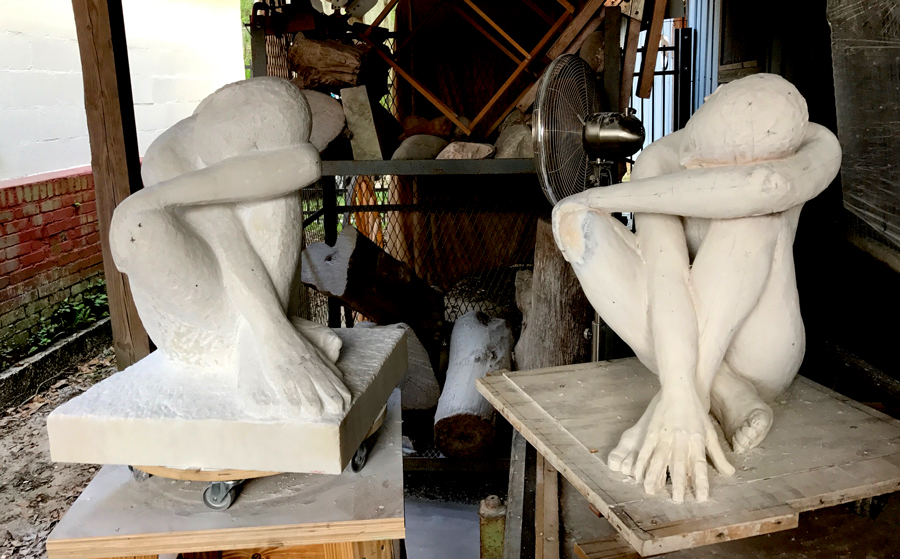This is the essentially completed sculpture residing at the Icehouse Gallery workshop in McIntosh. Originally the idea for it was inspired by Brancusi’s “The Kiss,” but now this piece shows an opposite kiss, one that will never touch.
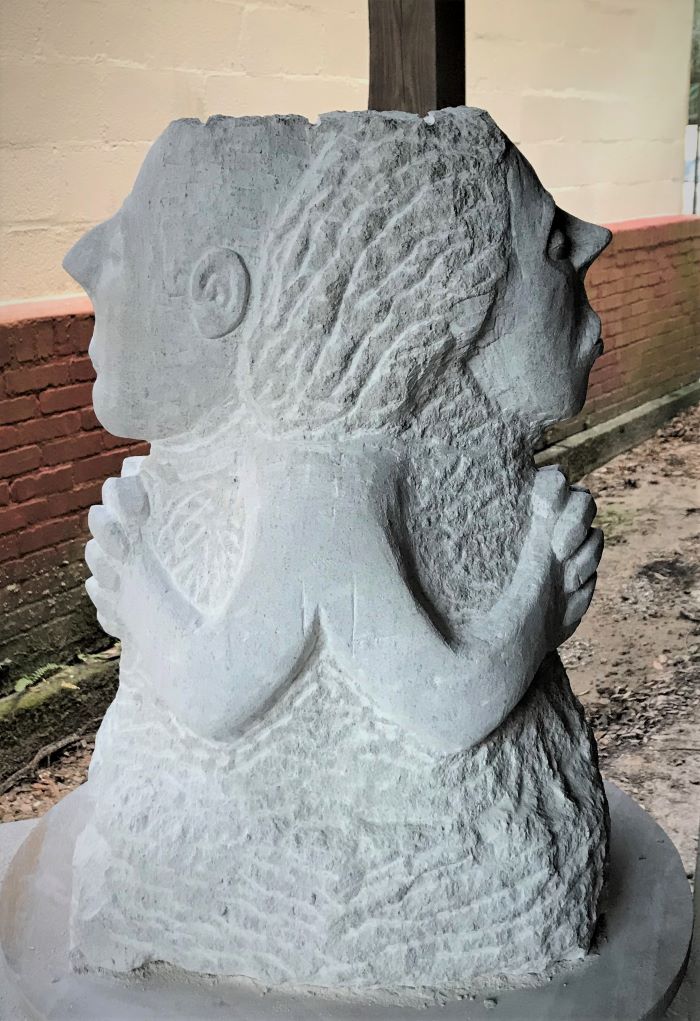
This is the essentially completed sculpture residing at the Icehouse Gallery workshop in McIntosh. Originally the idea for it was inspired by Brancusi’s “The Kiss,” but now this piece shows an opposite kiss, one that will never touch.

Several years ago, I hand built several Shoji Hamada-inspired ceramic bottles but the result was not satisfying: it was difficult to construct the curved forms.
Now I have used press molds to make the main shapes. The bottle tops are then added using components made from smaller molds. The fish and raven figures are painted on bisque ware using a Jet Black (Amaco) or a Kings Blue (Mayco) underglaze. Finally, a cone 6 glaze (5/20) is used in an oxidation firing. The tallest one is 10″ tall.
For the last several months, I made small porcelain ceramic carts, about 10-12 inches high. The cart’s body is hand built, with 3/8 inch thick sides. The axles are wooden and the wheels turn. The carts are fired to cone 6, in oxidation.
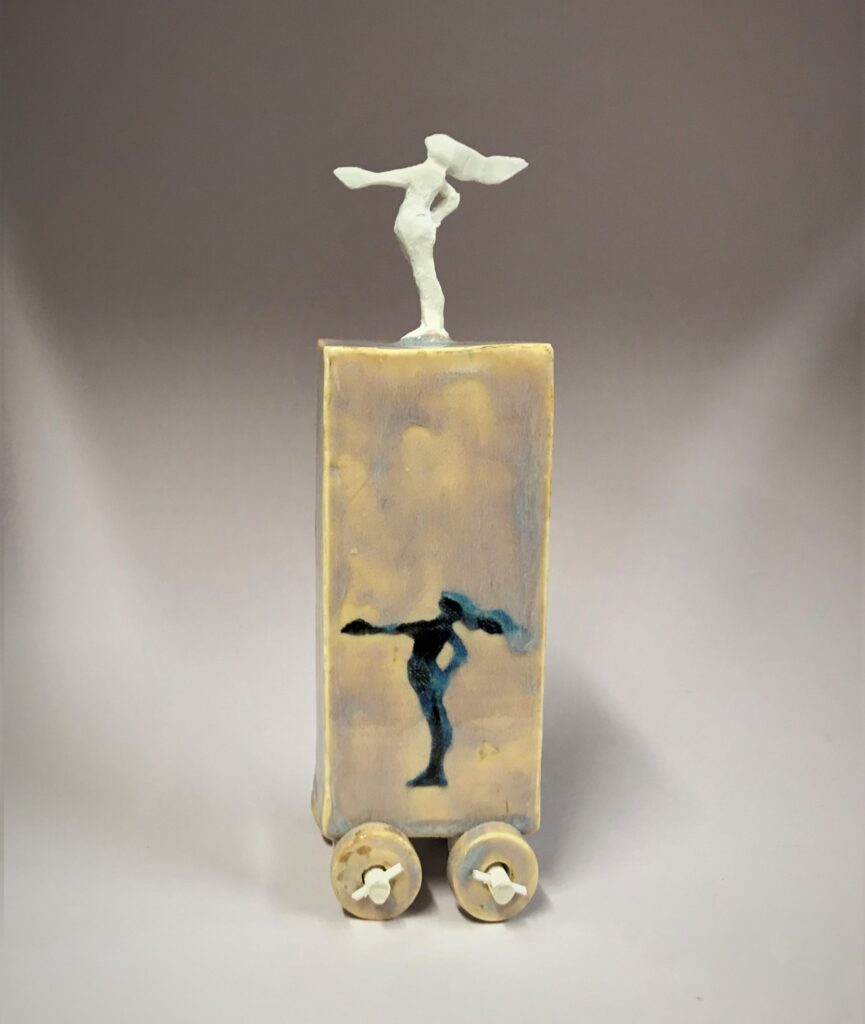
This cart is an adaptation of previous larger ones that I have made. Those had a raven theme and illustrated a “forward” woman design.
Marcel Duchamp invented the concept of the readymade. His idea was that an ordinary object can also be a work of art. All that was required was that the artist formally identify the object and present it as art. It was understood that the artist did not actually create, with their own hands, the specified work.
I have made three readymades, two are presented here.
Title: The Memory Purification Device. Composition: glass
Title: The Cognitive Aerator. Composition: plexiglass, aluminum microtubes, aluminum , rubber, steel, foil identification plate.
The original sculpture by Constantin Brancusi
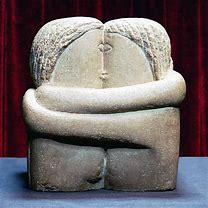
Below is my current limestone sculpture, in progress, at the Ice House Studio in McIntosh. It is intended to be a counterpoint to Brancusi’s “The Kiss”. In my sculpture, a man and woman have their arms and hands folded while their lips try to kiss an anticipated, but absent, partner.
Great joy comes from a good pit fire day, which was the case this weekend. Here are the new pots resting on a shelf in my garage studio. For those who might want to try pit firing, my method is outlined below.
Incidentally, the picture at the top of the photo is from a painting by Norman Jensen, a Gainesville artist.
CAW’s method for pit firing:
In ancient Egypt, a Shawabti was a funerary figurine with a hieroglyphic spell written on it. The spell enabled it to come to life in the afterworld and do work for the deceased. This Shawabti has a contemporary spell written on it that enables it to do work for you in the present world. The spell reads: “If you are called, I will do your work so that you can rest. I will protect your home and keep you safe from trouble and despair. I am strong and able, and you can depend on me.”
This Shawabti is 7 1/8 inches tall and is solid, mid-fired, porcelain. The marble base is 2” x 2.5”. There is a thin metal rod in the marble base that stabilizes the figure via a small center hole. A separate divider of grogged porcelain (with gold overglaze) sits between the foot of the Shawabti and the marble base.
After many months of experimentation, I think I have now come close to making a viable, contemporary Shawabti. Here it is
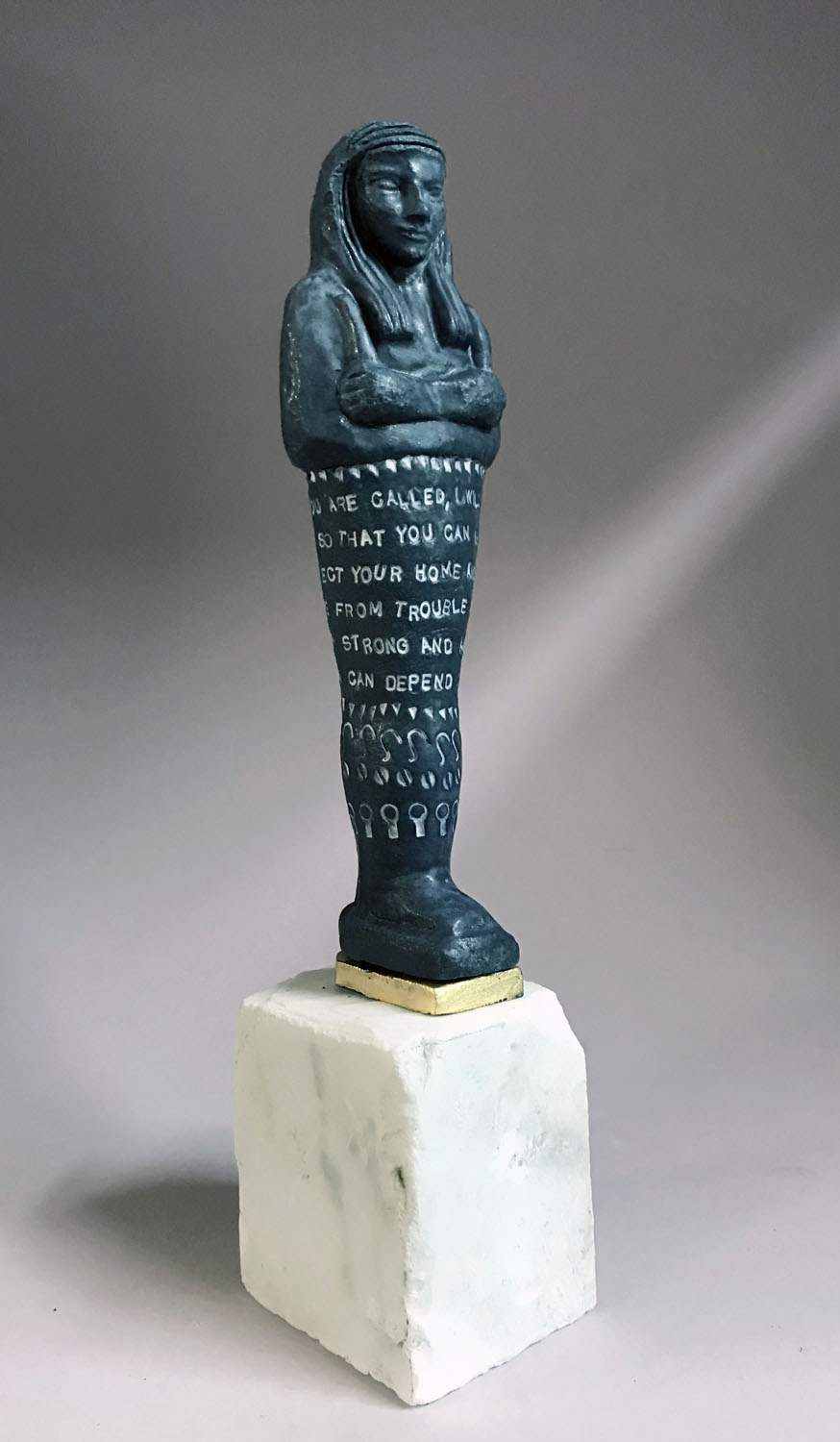
Shawabti (also called ushabti or shabti) funerary figurine
In ancient Egypt, a Shawabti was a funerary figurine with a hieroglyphic spell written on it. The spell enabled it to come to life in the afterworld and do work for the deceased. This Shawabti has a contemporary spell written on it that enables it to do work for you in the present world. The spell reads: “If you are called, I will do your work so that you can rest. I will protect your home and keep you safe from trouble and despair. I am strong and able, and you can depend on me.”
This Shawabti is 7 1/8 inches tall and is solid, mid-fired, porcelain. The marble base is 2” x 2.5”. There is a thin metal rod in the marble base that stabilizes the figure via a small center hole. A separate divider of porcelain (with gold overglaze) sits between the foot of the Shawabti and the marble base.
Work is continuing on the rock, at George’s Ice House Gallery, McIntosh, FL. I am getting within 1/4 inch of the final surfaces on most parts of the figure.